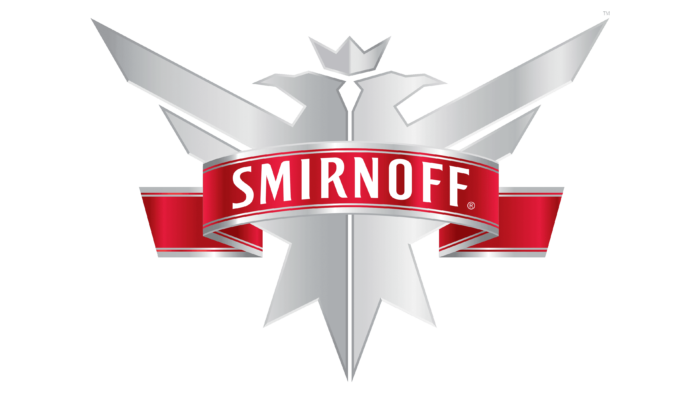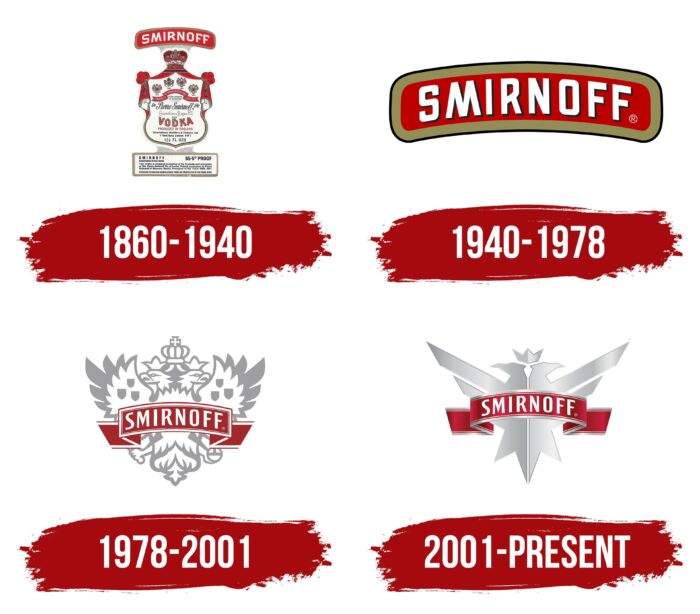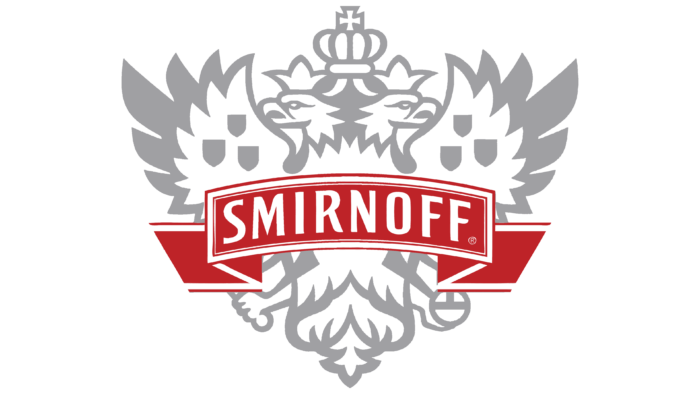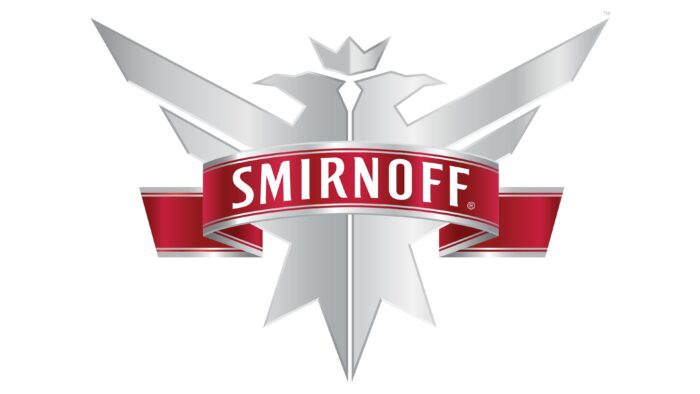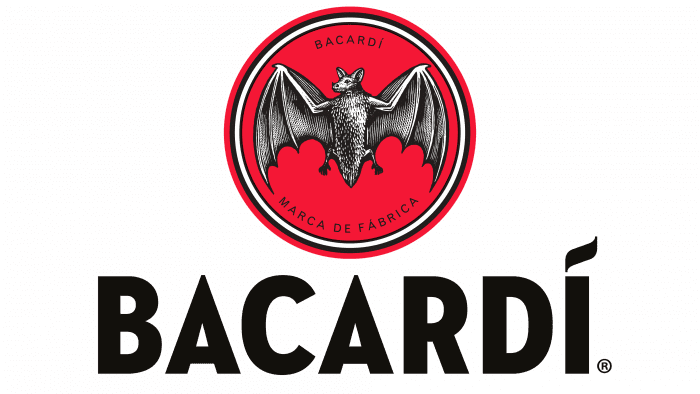The premium quality and majesty of the double-headed eagle are reflected in the Smirnoff logo. The strong taste and purity of the drink are visible in tones and symbols thanks to a special filtration system. The emblem belongs to one of the most sought-after and well-known brands.
Smirnoff: Brand overview
| Founded: | 1860s |
| Founder: | Diageo |
| Headquarters: | Russia |
| Website: | smirnoff.com |
Meaning and History
In 1864 the Russian entrepreneur Pyotr Smirnov opened a distillery, where he began producing alcohol under an individual brand name. He was the first to use charcoal filters for vodka production (in 1870) and was the first to run ads in newspapers, covering two-thirds of the Moscow consumer market by 1886.
After the businessman’s death, his company passed to his son Vladimir. Under him, it flourished, producing over 4 million cases of vodka each year. The new manager himself developed one of the recipes for the liquor. In 1904 the Russian tsar nationalized the alcohol industry, so Smirnov sold both the factory and the trademark. In 1917 the whole family went abroad, founding a new company in Constantinople (modern Istanbul), Turkey.
Four years later, Vladimir moved to Paris, where he re-launched vodka production and renamed it, Smirnoff. Despite the measures taken, it did not sell as well in Europe as in Russia. In 1933 he sold the rights to produce and sell his alcohol to the Russian emigrant Rudolph Kunett, whose family had previously supplied the grain. Kunett set up a distillery in Bethel, Connecticut, but his business in North America did not take off. Eventually, the owner of the vodka brand got in touch with the head of the Heublein company, John Martin. In 1939 he bought the rights to the Smirnoff trademark.
The board of directors considered it abnormal because throwing away a lot of money for something nobody saw in the U.S. is unreasonable. After all, the population mostly consumed whiskey and was unaware of such a product as vodka. At first, the demand was really low, but after advertising, it increased significantly. The fact is that the new owner of the alcoholic beverage promoted it on the American market as white “whiskey” – purified, filtered, odorless and tasteless. And that’s when sales picked up.
Later (in 1982), the company Heublein was bought by the tobacco manufacturer RJ Reynolds Tobacco and sold the alcohol division to Grand Metropolitan five years later. In 1997 it merged with Guinness to form Diageo Corporation. In the 1990s, one of Pyotr Smirnov’s descendants launched Smirnoff vodka in Russia, claiming it was the “only correct” vodka. But the real Smirnoff company took this right from her and fully reclaimed the trademark.
What is Smirnoff?
Smirnoff is a British vodka brand owned by Diageo. It appeared in 1864 and was founded in Moscow (Russia) by the entrepreneur Pyotr Arsenievich Smirnov. After the October Revolution, his son Vladimir emigrated abroad, where he opened a new vodka distillery, first in the Turkish city of Istanbul, then in the French capital Paris. Still, he failed to establish a large-scale production, so he sold the brand.
1860 – 1940
The debut logo had a lot of small details, so it wasn’t easy to see. It had a white shield with double edging and gold lines. On top, it had a royal mantle of deep red, which hung loosely to the middle of the sign. There were also four personal coats of arms and a large golden crown. In the center were the names of the vodka and its manufacturer.
1940 – 1978
After a series of transitions from owner to owner, the vodka company and its products had a minimalist logo. Designers removed the coat of arms, mantle, and crown, retaining only the arched lettering with the updated brand name. The word ‘Smirnoff’ was upgraded: the white letters got a black shadow in the form of thin lines on the right side. Thanks to them, the inscription looked imposing and respectable. The background for it was a red canvas with a wide golden border.
1978 – 2001
In 1978 the visual concept of the vodka brand was changed. The most important innovation of that time was the double-headed eagle with the attributes of the monarchy. The scepter and orb were in his paws, and the crown was above his head. The feathered predator was the symbol of the Russian empire and embodied the company’s historical roots, which originated in czarist Russia. The red arch was turned into a ribbon with diagonally cut ends and a double white border. The inscription has lost its angularity – it has become smooth and graceful.
2001 – today
To reflect the high strength of Smirnoff vodka, the designers redid the logo adding sharp angles and straight lines to it. As a result, a stylized double-headed eagle with barely recognizable outlines appeared. He has a distinctive head, crown, wings, and tails. Small details are completely removed. The developers corrected the cross ribbon and its inscription by adding a red gradient and light highlights. They repainted the trim in silver, keeping only the name of the vodka white. The sharp features of the background eagle perfectly harmonize with the smooth lines of the letters.
Font and Colors
Over the years, the Smirnoff trademark logo has been improved and made maximally close to the subject of the tsar’s Russia. It acquired new features – confident, austere, and noble from hand to hand. Particularly important was the appearance of the double-headed monarchic eagle with the tsarist attributes, which brought the vodka closer to its historical heritage. It made the spirit understandable for foreign consumers and emphasized its highest status on the alcoholic product market.
The inscription in the logo is made by a font of individual design based on the Humanist grotesque. Despite the long history of its appearance, it still looks modern and elegant, demonstrating the softness of vodka on the background of a high degree. The smooth lines of the letters and the sharp angles of the double-headed eagle speak of it.
Now the Smirnoff signature palette consists of deep red and silver. Red symbolizes the brand’s historical roots, its strength, and its experience of fighting for wide recognition around the world. The silver reflects the crystal-frosty purity of the alcoholic beverage. However, the company also uses a different palette in its labels, depending on the vodka line. In the early versions of the emblem, burgundy and gold were the dominant colors.
Smirnoff color codes
| Cardinal | Hex color: | #c21f3a |
|---|---|---|
| RGB: | 194 31 58 | |
| CMYK: | 0 84 70 24 | |
| Pantone: | PMS 199 C |
| Light Gray | Hex color: | #d0d1d3 |
|---|---|---|
| RGB: | 208 209 211 | |
| CMYK: | 1 1 0 17 | |
| Pantone: | PMS 427 C |
